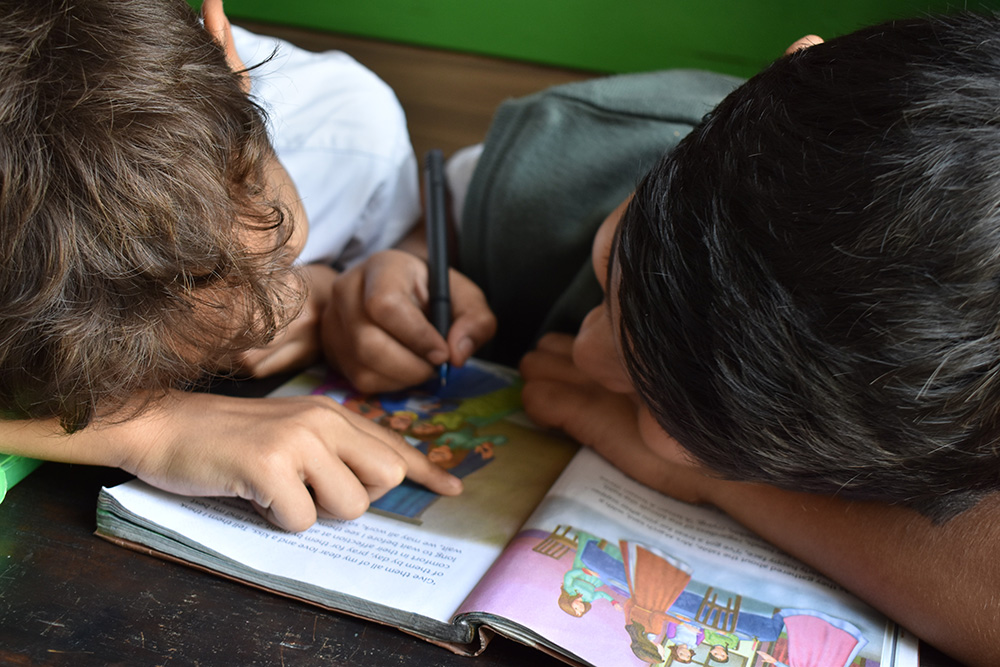How To Use Elkonin Boxes To Help Children Practice Reading Skills
According to the Young Readers Foundation, reading not only helps build focus and comprehension, it also helps children develop empathy, leadership, confidence, and social skills—and developing a few key early literacy skills can help children grow into confident and proficient readers. Skills include:
- Phonics skills, which help children understand how individual letters combine to make sounds.
- Phoneme awareness skills, which involve learning how different sounds make up different words.
- Phonological skills combine phonics and phonemic awareness skills to teach children how to blend phonemes and sound out new words.
One simple tool to help students to segment words into individual sounds or individual letters and develop phonological awareness skills is an Elkonin box.

What Are Elkonin Boxes?
Elkonin boxes, or sound boxes, are a powerful tool used to help children develop foundation skills for reading. Elkonin boxes are an evidence-based instructional method created by D.B. Elkonin, a Russian psychologist. Research has confirmed they're an incredibly effective tool for building a strong foundation of beginner reading skills.
Elkonin boxes are a simple, fun activity that only require a piece of paper or a dry erase board. They're a series of boxes with pictures that help elementary grade students break up words into individual phonemes. Isolated phonemes are the individual units of sound that make up words. Children place objects or write letters in each of the boxes to represent each individual phoneme block.
Parents or teachers can download a box template for a simple, effective strategy that helps children to practice phoneme segmenting and blending the different sounds that make up words.
Who Should Use Elkonin Boxes?
Elkonin boxes help children develop phonological awareness, a foundational literacy skill. As such, they're useful to individual students at every learning level. However, Elkonin boxes can be particularly helpful for children likely to struggle with reading, like those learning English as a second language or children with a family history of reading disabilities. About 15% of people struggle with dyslexia, a reading disability that causes difficulties with phonemic awareness. Using Elkonin boxes to segment words can help children with phoneme awareness difficulties gain confidence with reading.

How To Use Elkonin Sound Boxes
Elkonin sound boxes were originally designed to be used with pictures. While some versions now use written words instead of pictures, Elkonin picture cards are great for children beginning to learn about phonemes.
To start, download a printable Elkonin box template, or simply grab a pen and paper to draw one yourself. Find a household or classroom object with a short, normal name, or print off a picture of a simple object. Under the object, draw one box for every phoneme in the object name. For example, "cat" has three phonemes, /c/, /a/, and /t/, and "bear" has two, /b/ and /air/.
Show your child the picture or object and slowly say the word aloud together. Move a small object, like a coin, into each box as you say each phoneme.
How To Use Elkonin Boxes With Letters
Advanced students can use Elkonin boxes with letters to help boost writing and word decoding skills. Instead of printing off photos of objects, write a simple word at the top of a page that has normal (easy to sound out) spelling. Draw one box for each phoneme. To start, say the word aloud together and have your child put a small object in the box for each phoneme. For a more challenging activity, have your child write the letters for each phoneme in the box instead.
Tips for Using Elkonin Boxes Effectively
Elkonin boxes are a relatively easy class activity, but there are a few things you can do to help make them most effective.
- Start small. Start with short, simple words with just a few phonemes, like "key" or "dog." Additionally, start with pictures and objects instead of written words.
- Avoid silent letters. Words with silent letters—like "knit" or "rough"—are particularly tricky for kids learning to read. Avoid these words until your students have mastered phonemic basics, since they can easily confuse and frustrate beginning readers. Once students are comfortable with phonics skills, you can introduce more difficult words.
- Slowly sound out words together. Connecting words with sounds is a skill, so don't expect your student to get the hang of it right away. Sounding out words together (even when using picture boxes) can help children to think through the sounds composing words. Slowly sound out words together and emphasize each individual phoneme to help them hear and learn.
Use Elkonin boxes in individual and small group settings. Elkonin boxes are a great individual or small group activity. Some children might be more comfortable sounding out words in a group to start. It's important to create a comfortable environment
to facilitate learning, so if students seem more comfortable in a group to start, prioritize group learning.

For Literacy Support at any Age, Check Out Voyager Sopris Learning’s Solutions
Literacy is a key skill, so we've designed specific solutions to boost literacy for struggling students. For K–5 students, our Voyager Passport® comprehensive curriculum can build foundational skills. This program comes with our online Reading Rangers program to provide dedicated reading practice for struggling students.
For students in grades 5–12, our LANGUAGE! Live® curriculum helps students achieve grade-level proficiency with a multisensory, inclusive, and equitable approach.
Contact us so you can help you make a move to help your students succeed and grow in literacy.

